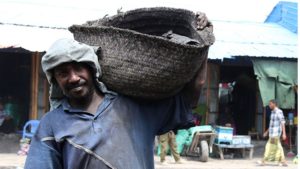One year ago, we did not know how many Somalis were poor and how programs and policies could help to reduce poverty or at least build resilience against falling deeper into poverty.

We knew that Somalis receive an estimated $1.4 billion (24 percent of GDP) in remittances every year. But we did not know whether the poor received the remittances and whether they helped mitigate the impact of poverty. To overcome this dearth of information, we implemented the Somali High Frequency Survey and established a near real-time market price monitoring system.
Every second Somali is living in poverty.
Poverty, defined as having a total expenditure available for your consumption that is lower than the international poverty line of US$1.90 a day, also varies considerably across the Somali population, ranging in different geographical areas from 26 to 70 percent. Poor households are more likely to be deprived beyond monetary poverty, and less likely to participate in the labor market. In addition, the rural poor especially are increasingly left behind in education, fueling the inter-generational transmission of poverty.
Thus, improving education with a focus on rural areas and enhancing active labor market participation, in particular among women, will be important to reduce poverty and inequality.
Remittances make important contributions to welfare, with 1 in 5 Somali households receiving remittances and many recipients relying heavily on these transfers. Without remittances, many of those households would fall into poverty. In fact, households that receive less remittances this year than in the previous year are more likely to be poor, suggesting households struggle to adjust to such income shocks. Recipient households are typically urban, headed by women, and better educated. They are more likely to enroll their children in school and spend more on education — this is especially true for poorer recipient households. Through remittances, poor recipients can in fact offset much of their educational disadvantage compared to non-poor households.
While remittances are helpful for those who receive them, many of the most vulnerable Somalis are largely excluded from this support network. Internally Displaced Persons’ (IDPs’) households are among the poorest households, but only around 7 percent of them receive remittances. Many of the recipient IDP households further suffered from a reduction in the value of the remittances they received relative to the previous year, something that can be hard to compensate.
The amounts received are not effective in reducing poverty for recipient IDP households because they are too small relative to the poverty gap. Thus, remittances showcase how cash transfers provide an effective means of resilience to adverse shocks, but remain largely unavailable to the most vulnerable populations.
All this makes a strong case for social protection programs to build resilience that is more inclusive with less uncertainty. The worst drought in decades hit the Somali population hard in the first half of 2017, leaving an estimated 6.7 million people in need of humanitarian assistance and recovery support. The second wave of the Somali High Frequency Survey is planned for the coming months, with its expanded coverage including the nomadic population. It will offer us a second snapshot capturing the impact of the crisis on people’s livelihoods as well as poverty dynamics over time to help us inform resilience programs for the future in more detail.
The Somali High Frequency Survey is part of the Multi Partner Fund’s (MPF) Knowledge Fund, which aims to fill critical gaps in statistics and knowledge to inform the development planning and investment that is aligned with the National Development Plan. Other knowledge products include the Somalia Economic Update.
Read more: How remittances help the poor but not the most vulnerable Somalis
Source: WBG


